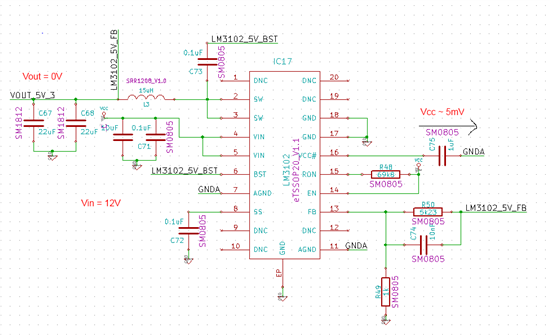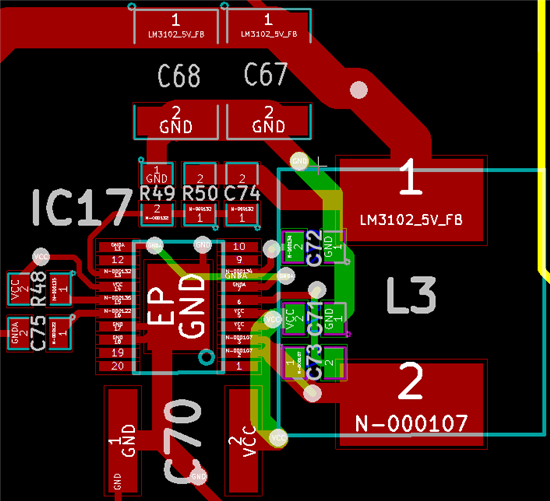Hi everyone,
we use the LM3102 voltage regulator for 5V and 3.3V supplies and are having quite a hard time with it. Below you can see the schematics of the 5V supply with some measurements in red letters. We use the LM3102 according to the proposed webench design which also complies with the datasheet (e.g. the example on page 15 of the datasheet, except that we connected the EN pin to Vin). All values for external components have been adjusted according to the specification to match our problem.
But somehow the regulator is not working at all. The supposed voltage level of 6V for the Vcc-pin is not reached (we measure about 5mV at Vcc), even though the 12V input is applied properly. This is the same for both designs. In the simplified functional block description on page 10 in the datasheet it looks like the startup regulator starts working as soon as a sufficient Vin is applied and accordingly Vcc has to approach 6V by charging Cvcc. If this is not the case the UVLO circuit prevents switching. Could it be that we made a systematic manufacturing mistake? Another power supply on the same board with the LM5009 works fine, though. We soldered all parts in a standard reflow process and checked the PCB for short circuits.

Any hints to possible causes for such a behaviour are very much appreciated.
Cheers
Jonas Witt


